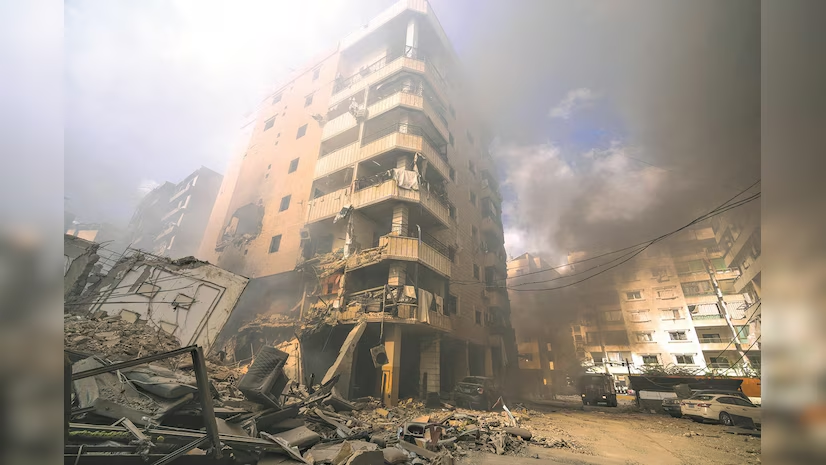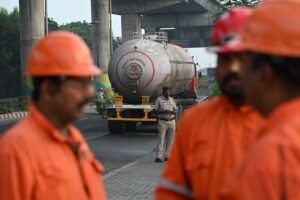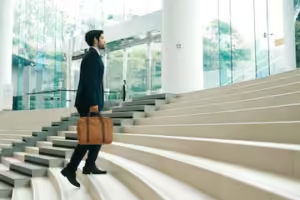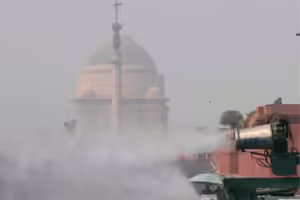Displacement from Israel-Hezbollah war transforms Beirut’s famed street

In recent decades, the street has experienced fluctuations, influenced by the circumstances in the compact Mediterranean country.
Amidst the walls of a historical cinema in Beirut, a diverse group comprising Lebanese, Palestinians, and Syrians displaced during the Israel-Hezbollah conflict now find solace. Engrossed in news updates on their mobile devices, engaging in conversations, preparing meals, and strolling around, they fill their days within the premises.
Hamra Street, once a bustling economic center, now finds its sidewalks teeming with displaced individuals, while hotels and apartments are packed with those in search of refuge. The cafes and restaurants are bursting at the seams with patrons.
The commercial district has seen a revitalization following the significant relocation of hundreds of thousands of individuals from various regions in Lebanon such as south Lebanon, the eastern Bekaa Valley, and the southern suburbs of Beirut. This resurgence comes after a period of stagnation brought about by Lebanon’s economic downturn.
However, it falls short of the revival that so many were anticipating.
According to the manager of a four-star hotel on Hamra Street, the recent surge in displacement has revitalized the area in an undesirable manner. Anonymously sharing insights on the challenges brought by the sudden increase in population, the manager highlighted the negative impact on the neighborhood.
His hotel experienced full occupancy for three weeks following the escalation of the war in mid-September. Currently, it maintains a 65 percent occupancy rate, which is still commendable for this season, considering that some guests have shifted to more affordable rented apartments.
The influx of displaced individuals, he remarked, has resulted in disorder. Congested traffic, widespread double parking, and motorcycles and scooters haphazardly strewn across sidewalks have become commonplace, posing challenges for pedestrians. He noted that conflicts frequently arise between displaced individuals and the local residents.
For years, Hamra Street has served as a barometer for the tumultuous political landscape of Lebanon.
In the 1960s and early 1970s, Lebanon’s prime era exuded glamour, boasting the finest movie theaters and theaters, cafes bustling with intellectuals and artists, and upscale boutiques.
The street has experienced fluctuations over the years, reflecting the tumultuous events in the small Mediterranean country plagued by recurring instability, notably a 15-year civil war concluding in 1990. In 1982, Israeli tanks advanced along Hamra Street during Israel’s invasion, penetrating as far as west Beirut.
The district underwent a significant change when an increasing number of Syrian refugees sought shelter from the neighboring nation’s war, coinciding with a sharp decline in businesses due to the country’s financial crisis that commenced in 2019.
Israel significantly increased its military operations in certain areas of Lebanon on the 23rd of September, resulting in the deaths of almost 500 individuals and injuries to 1,600 in a single day. This escalation followed almost a year of occasional clashes along the Lebanon-Israel border involving Israeli forces and the militant Hezbollah organization. The surge in attacks prompted a mass movement of people seeking refuge from the airstrikes, with numerous individuals seeking shelter in public squares, on beaches, and on pavements throughout Beirut.
According to Lebanon’s Health Ministry, the ongoing war has led to the deaths of over 2,574 individuals and left more than 12,000 others injured. Additionally, approximately 1.2 million individuals have been forced to flee their homes due to the conflict.
Numerous individuals have poured into Hamra, a vibrant and varied district. Some have chosen to stay with family or friends, while others have sought refuge in hotels and schools converted into shelters. Over the past few days, displaced individuals have occupied several vacant buildings, leading to clashes with security forces and, at times, escalating into violence resulting in their eviction.
Mohamad Rayes, a member of the Hamra Traders Association, mentioned that prior to the arrival of displaced individuals, certain businesses had contemplated shutting down due to financial challenges.
Rayes described the phenomenon as unimaginable, referring to the influx of displaced individuals reinvigorating commerce in Hamra like never before. He noted that certain merchants had even hiked prices twofold in response to the soaring demand.
Farouk Fahmy reported a 70 percent surge in sales at his cellphone store during the initial fortnight, attributing this growth to customers, predominantly refugees, purchasing chargers and data packages for staying updated with current events.
Fahmy mentioned that the market is once again at a standstill.
Hani, the owner of a small boutique business, saw a 300% increase in sales of men’s and women’s underwear and pajamas as a result of many people leaving their homes with minimal belongings. Hani chose not to disclose his full name due to safety concerns.
Le Colisee, a historic movie theatre standing for 60 years on Hamra Street, had shut its doors for over twenty years. Recently, Lebanese actor Kassem Istanbouli, the mastermind behind the Lebanese National Theater, acquired the place and initiated its refurbishment. Amidst the widespread displacement crisis, he repurposed it as a refuge for families escaping their residences in southern Lebanon.
Istanbouli, the individual behind theaters located in the southern port city of Tyre and Lebanon’s second-largest northern city Tripoli, has transformed these three establishments into safe havens welcoming individuals of any nationality seeking refuge.
Displaced individuals in the Beirut cinema this week found seats on slender mattresses laid out on its red carpet, engaging in activities such as scrolling through their phones and reading. Among them, some lent a hand in the ongoing renovation efforts at the theater.
Abdul-Rahman Mansour, a Syrian national, sought refuge with his three siblings and their mother, Joumana Hanafi, who is of Palestinian-Lebanese descent. The family evacuated Tyre following a rocket strike close to their residence. They found sanctuary at a school in Sidon, where they were granted accommodation due to their mother’s Lebanese citizenship.
Mansour and his brothers, being Syrians, were asked to leave by the shelter’s management as only Lebanese citizens were permitted to stay. Consequently, they had to head back to Tyre with nowhere else to go.
Hanafi expressed his hope that you never have to experience a night as intense as the one we spent in Tyre, where we slept amidst relentless bombardment.
Istanbouli, spending countless hours at his theaters in Beirut and Tripoli to support the displaced, was once told by a mother that her son recognized him. When informed of their Syrian identity, the son expressed regret at the necessity of stating it. Reflecting on the grim reality of war, Istanbouli remarked on the unusual situation where people now gather at the theater not for movies, but to witness the harsh realities unfolding outside.














